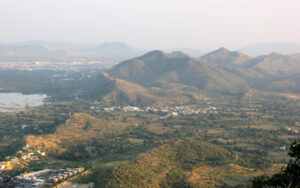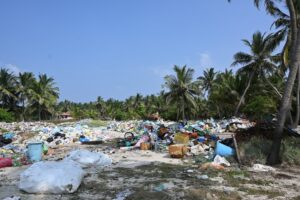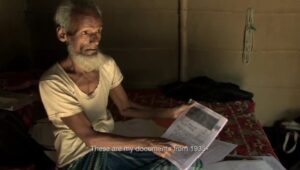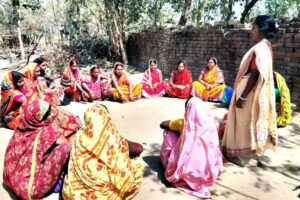Birds Found Using Waste To Build Nests In A Bhopal Institute
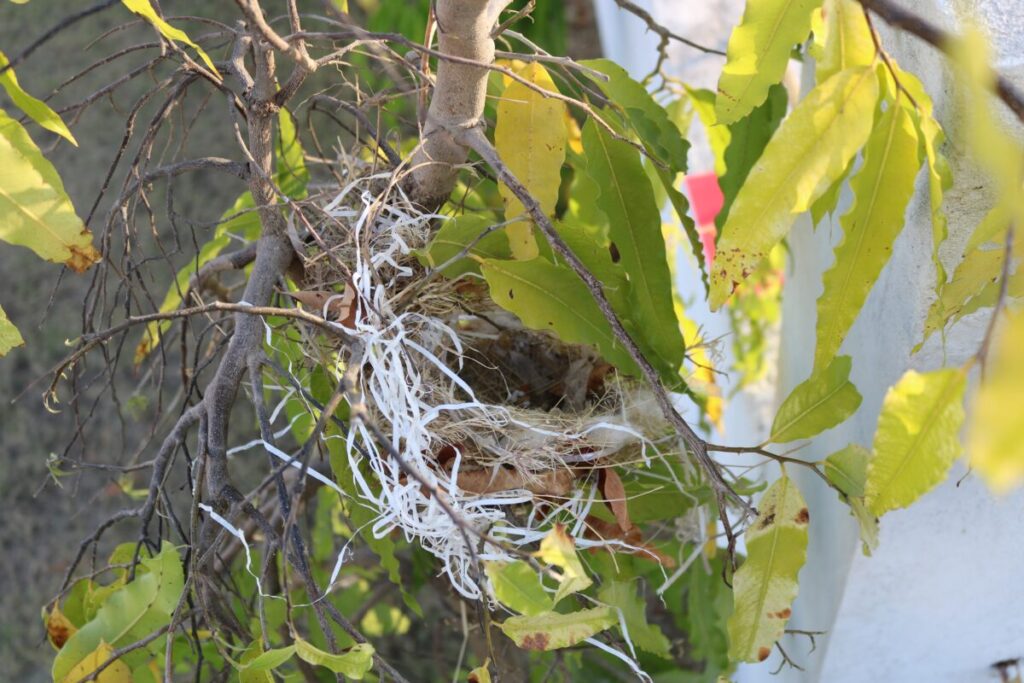
A nest belonging to a red-vented bulbul, constructed using anthropogenic waste material (Photo by N.S. Prasanna)
A new study by scientists from Indian Institute of Science Education and Research (IISER) Bhopal and National Centre for Biological Sciences, Bengaluru, investigated the effect of anthropogenic waste on the construction of birds’ nests.
The publication cites global examples of the effects of anthropogenic waste material in nests. While most research appears to focus on negative ramifications such as an increased risk of plastic ingestion, entwinement, genetic damage, and reduced mortality, others claim that using some waste materials that are brightly coloured may actually help birds signal their territory or draw in mates.
Vinita Gowda, a member of the research team from IISER says, “We were drawn to this topic by accident when we moved to the new campus and started setting up early bird monitoring studies and noticed the usage of plastic in many nests that we were observing at the time. We initiated the study in order to understand if the plastic in the nests was detrimental to the host chicks and we were surprised that the parents would make this choice.”
The aim of the study was to identify the different types of anthropogenic waste materials (AWM) used by birds for building nests and to investigate, on the community scale, how improper waste disposal affects this behaviour.
“Our literature survey at that time showed that people had predicted several “detrimental” effects but none of them had been scientifically tested and there were many arm-chair theories being floated around. In India particularly, we found a few studies and all of them are reported in our paper, and several blogs and images were also found but they were only observational in nature,” adds Gowda.
Findings From The Study
The study was conducted on the IISER Bhopal campus where over 120 bird species, including 25 migrant species, have been documented.
Using surveys, 82 nests were collected for analysis at the end of the breeding season to ensure that the birds were not disturbed. Each nest, collected after the breeding season, was dissected using forceps to separate the construction materials used in each layer. Instead of weighing the amount of AWM, it was visually quantified – first as the amount of AWM in the nest as a whole and then the amount of AWM in each layer of the nest. The researchers also photographed the nest at the location and collected information on the habitat, shape of the nest, and the species, whenever possible.
The team was able to identify 11 bird species that had built 45 of the collected nests, of which seven were built using AWM. The authors concluded that the ashy-crowned sparrow-lark used the highest amount of AWM whereas the house sparrow and purple sunbird used the greatest variety.
Notably, AWM was not present in the simple nests built by the laughing dove or the highly complex nests of the baya weaver. The authors suggest that this difference could mean that the use of AWM for constructing nests is specific to certain species.
Another interesting finding was that of red-vented bulbuls that were observed to use different types of AWM in their nests. Previous research reports that this species uses plastic to build nests, and its populations are increasing in urbanised spaces, suggesting that they may be adapting to changing environments which allows them to continue to thrive even in areas of anthropogenic disturbance.
Each nest has different layers that serve different functions. The study found the highest amount of AWM in the structural layer, perhaps because they strengthen the nest and make them less prone to changing shape. The authors guess that the least amount is found in the inner layers of the nest as this is where the AWM would come in direct contact with nestlings and could cause harm.
Being a preliminary study, the researchers do not detail the impact of AWM used in nests, on specific species.
Potential For Future Research
Given the implications of this study for the local avian community, Gowda says that the team plans to inform the campus of their findings. The study authors hope that local initiatives to understand and address such environmental changes may arise following their study.
Even on the broader scale, there is no initiative to address the issue of AWM in the avian community. “We specifically highlighted the Swachh Bharat Abhiyan to extend the cleanliness drive to natural biota outside of human settlements. We already know the cases of plastic in bovine animals, and many sea birds. It is about time we highlight the fact that the animals are suffering because of us, and it is the expression of the pathological condition of excessive plastic or AWM in our environments,” Gowda told Mongabay-India.
It is interesting that there are both advantages and disadvantages of AWM being used in the construction of nests. When asked whether the benefits of using AWM such as cigarette butts to reduce ectoparasite loads or bright objects to signal fitness outweigh their costs of use, Gowda says that this is yet to be studied. She stresses that experiments to understand such benefits better must be done carefully and ethically.
The research team plans to take the findings of this study forward. “We will continue to monitor nest usage at a periodic level, now that we have established some basic data on this aspect and we hope that this will become a standard pattern across landscapes and the appearance of plastic in nests should be seen as an indicator that the environment is showing excessive AWM accumulation,” Gowda concludes.
(Published under Creative Commons from Mongabay-India. Read the original article here)

